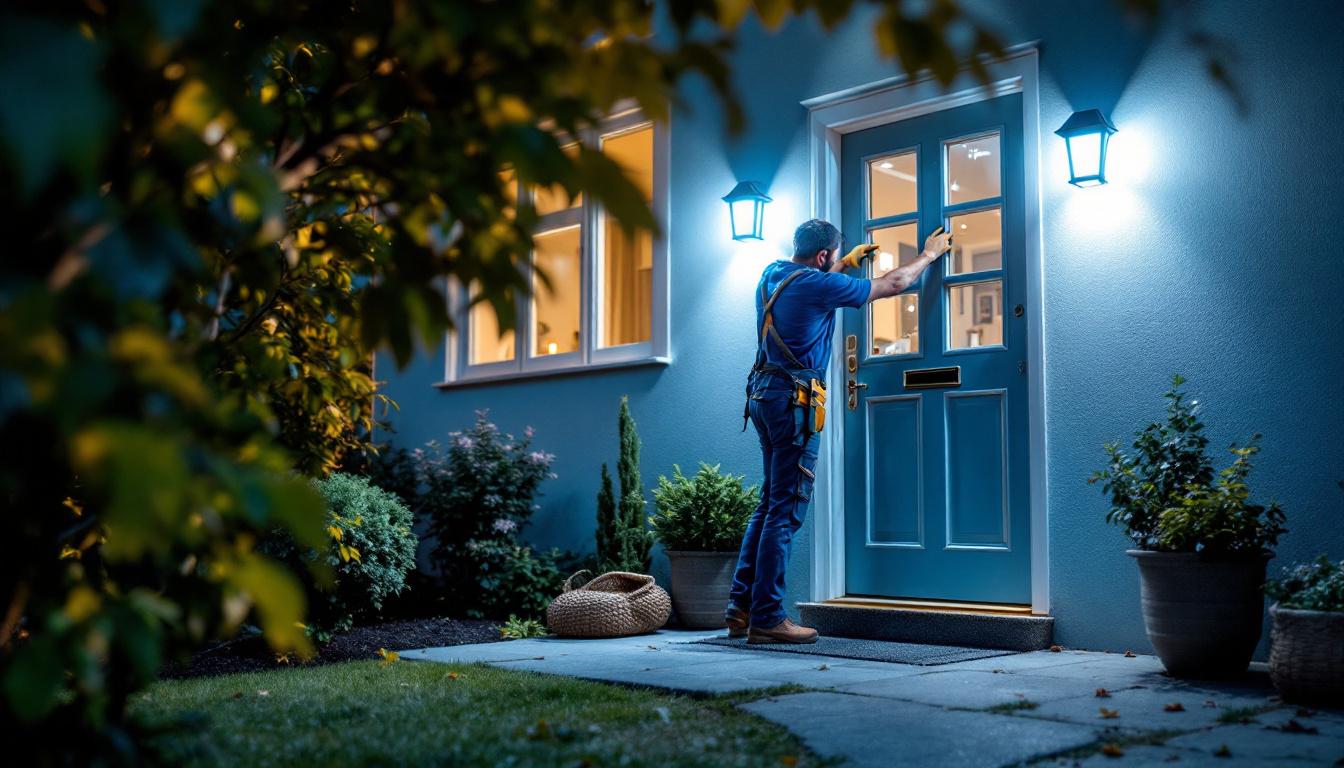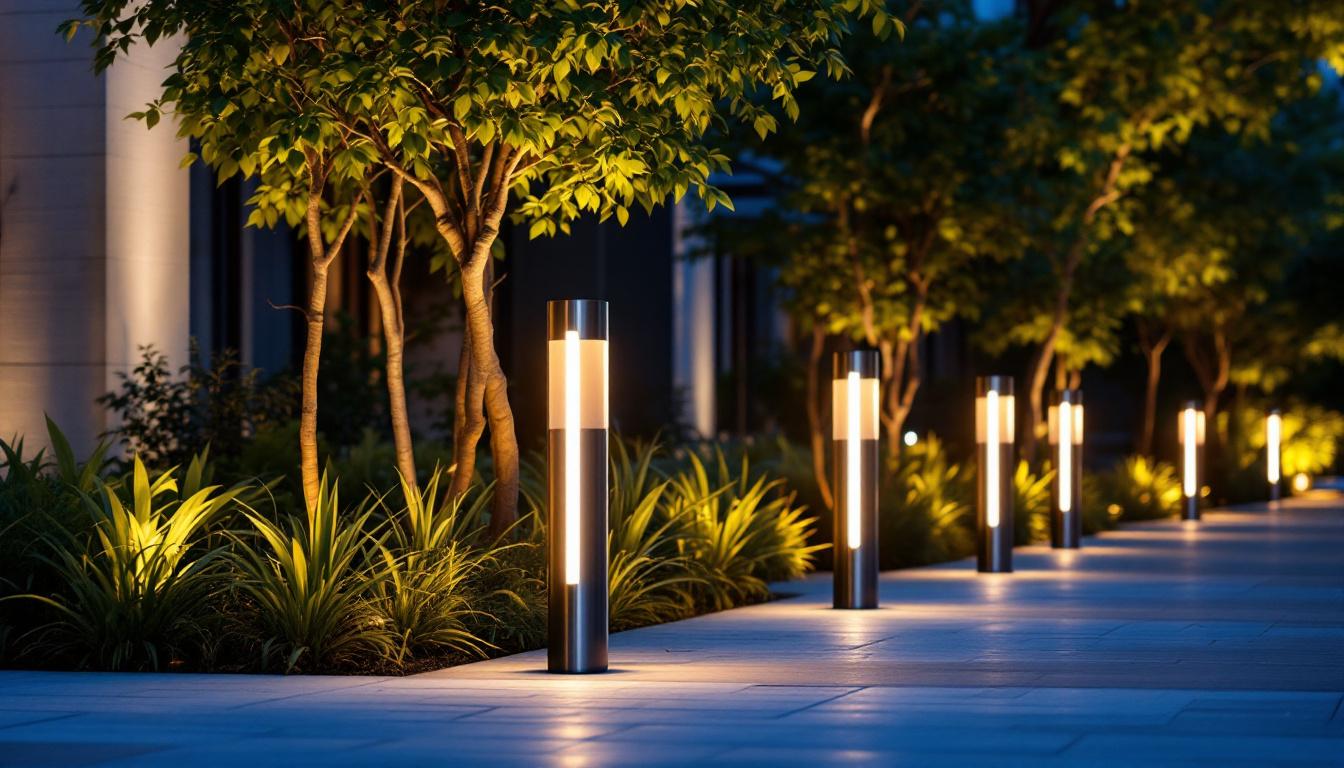
As the demand for sustainable and energy-efficient solutions continues to rise, solar-powered lamps have emerged as a popular choice for both residential and commercial lighting. For lighting contractors, understanding the intricacies of solar-powered lamps is essential for providing clients with the best possible options. This article serves as a comprehensive checklist for lighting contractors, outlining key considerations and components necessary for successful solar lamp installations.
Solar-powered lamps harness energy from the sun, converting it into electricity through photovoltaic cells. This technology not only reduces energy costs but also minimizes environmental impact. As a lighting contractor, familiarity with the fundamental aspects of these lamps is crucial for effective installation and client satisfaction.
Each solar lamp consists of several key components, including solar panels, batteries, LED lights, and control systems. Understanding each component’s role will help in selecting the right products for various applications.
Solar panels capture sunlight and convert it into electrical energy. The efficiency of these panels directly affects the lamp’s performance. Batteries store the energy generated during the day, allowing the lamp to function at night. LED lights are favored for their energy efficiency and longevity, while control systems manage the operation of the lamp, including features like motion sensors and timers.
In addition to these primary components, many modern solar lamps incorporate smart technology, enabling remote control and monitoring through mobile apps. This innovation allows users to adjust brightness levels, set schedules, and receive notifications about battery status, enhancing the overall user experience. Furthermore, some lamps are designed with aesthetic features, such as decorative casings or color-changing LEDs, making them not only functional but also visually appealing additions to outdoor spaces.
Solar-powered lamps offer numerous advantages. They are environmentally friendly, reducing reliance on fossil fuels and lowering carbon footprints. Additionally, they can significantly decrease electricity bills for clients, making them an attractive option for budget-conscious consumers.
Moreover, solar lamps are often easier to install than traditional lighting systems. Without the need for extensive wiring or trenching, installation can be completed quickly and with minimal disruption. This efficiency can lead to increased project profitability for contractors.
Another significant benefit of solar lighting is its versatility. These lamps can be used in a variety of settings, from residential gardens to commercial parking lots, and even in remote areas where traditional electrical infrastructure is unavailable. Their portability allows for easy relocation, making them ideal for temporary events or seasonal decorations. Additionally, many solar lamps are designed to withstand various weather conditions, ensuring durability and reliability throughout the year, which is a critical consideration for clients looking for long-term solutions.
Before installation, a thorough site assessment is essential. This process involves evaluating the location’s solar exposure, potential obstructions, and the specific lighting needs of the client.
Assessing solar exposure is critical for determining the effectiveness of solar lamps. Ideally, the installation site should receive ample sunlight throughout the day. Factors such as nearby trees, buildings, or other structures can cast shadows, reducing the amount of sunlight that reaches the solar panels.
Contractors should consider using tools like solar pathfinders or shading analysis software to accurately evaluate solar exposure. This data will inform decisions regarding lamp placement and the number of units required to achieve desired lighting levels. Additionally, seasonal variations in sunlight can affect performance, so it may be beneficial to conduct assessments at different times of the year to ensure optimal positioning throughout all seasons.
Understanding the specific needs of the client is paramount. Factors such as the purpose of the lighting, desired brightness levels, and aesthetic preferences must be taken into account. For instance, a pathway may require softer lighting, while a security application may necessitate brighter, more focused illumination.
Engaging in open communication with clients can help clarify their expectations and ensure that the final installation meets their requirements. This collaboration can also foster trust and lead to repeat business and referrals. Furthermore, discussing potential future needs, such as expansion or changes in landscape design, can help in planning a more adaptable lighting solution. By taking a holistic approach to client needs, contractors can create a customized lighting plan that not only meets current demands but also anticipates future adjustments, thereby enhancing client satisfaction and project longevity.
With an array of solar lamps available on the market, selecting the right model for each project can be daunting. Considerations include lamp type, brightness, battery capacity, and additional features.
There are various types of solar lamps, each suited to different applications. For example, garden solar lights are perfect for landscaping, while street lamps are designed for public areas. Understanding the distinctions between these types will aid contractors in making informed recommendations to clients.
Additionally, some solar lamps come equipped with advanced features such as smart technology, allowing for remote control and scheduling through mobile applications. These features can enhance user experience and appeal to tech-savvy clients.
Brightness is measured in lumens, and it’s essential to choose a lamp that provides adequate illumination for its intended use. For example, pathway lights typically require around 100 to 200 lumens, while security lights may need upwards of 800 lumens.
Contractors should consider the specific lighting requirements of each project and select lamps that meet those needs without compromising on energy efficiency. This balance is key to ensuring client satisfaction and maintaining a reputation for quality work.
Proper installation is crucial for the performance and longevity of solar-powered lamps. Following best practices can help ensure that the lamps operate effectively and efficiently.
When installing solar lamps, placement and orientation are vital. Solar panels should face south (in the Northern Hemisphere) to maximize sunlight exposure. Additionally, lamps should be positioned at a height that allows for optimal light distribution while minimizing potential obstructions.
Contractors should also consider the angle of the solar panels. A tilt of around 30 degrees can enhance energy absorption, particularly in regions with varying seasonal sunlight. Adjusting the angle according to geographic location can improve overall performance.
Ensuring that solar lamps are securely installed is essential for preventing damage from weather conditions or vandalism. Using durable mounting hardware and following manufacturer guidelines will help maintain the integrity of the installation.
Furthermore, conducting a post-installation inspection can identify any potential issues early on. This proactive approach can save time and costs associated with repairs or replacements down the line.
While solar-powered lamps generally require less maintenance than traditional lighting systems, regular upkeep is still necessary to ensure optimal performance. Understanding common issues and their solutions can help contractors provide excellent service to clients.
Regular maintenance tasks include cleaning solar panels, checking battery health, and inspecting for any physical damage. Dust, dirt, and debris can accumulate on solar panels, reducing their efficiency. A simple cleaning with a soft cloth and mild soap can restore optimal functionality.
Additionally, batteries should be checked periodically to ensure they are holding a charge. Depending on the type of battery used, replacement may be necessary every few years. Keeping clients informed about maintenance schedules can enhance their experience and prolong the lifespan of the lighting system.
Contractors should be prepared to troubleshoot common issues that may arise with solar lamps. For example, if a lamp is not functioning, it may be due to insufficient sunlight exposure, a dead battery, or a faulty LED. Identifying the root cause quickly can minimize downtime and maintain client satisfaction.
Providing clients with a basic troubleshooting guide can empower them to address minor issues independently, further enhancing their experience with solar lighting solutions.
Educating clients about solar-powered lamps is essential for ensuring they understand the benefits and maintenance requirements. Providing support can foster long-term relationships and encourage repeat business.
Clients may have limited knowledge about solar technology, so taking the time to explain how solar lamps work can enhance their appreciation for the product. Discussing the environmental benefits and potential cost savings can further motivate clients to invest in solar solutions.
Offering demonstrations or visual aids can also help clients grasp the concept more effectively. The more informed they are, the more likely they are to advocate for solar solutions within their networks.
Creating a support system for clients can significantly enhance their experience. Providing contact information for questions or concerns, as well as offering maintenance services, can build trust and loyalty. Contractors who are responsive and attentive to client needs will likely see increased referrals and repeat business.
Additionally, consider creating a resource center on a company website, complete with FAQs, troubleshooting guides, and maintenance tips. This can serve as a valuable tool for both clients and contractors.
Solar-powered lamps present a fantastic opportunity for lighting contractors to offer sustainable and cost-effective solutions to clients. By following this comprehensive checklist, contractors can ensure successful installations, enhance client satisfaction, and contribute to a greener future.
From understanding the technology to providing ongoing support, every step in the process is crucial. As the market for solar lighting continues to expand, staying informed and adaptable will position contractors for success in this evolving industry.
Ready to elevate your lighting projects with the most sustainable and cost-effective solar-powered lamps? Look no further than LumenWholesale, where we provide contractors with the highest quality, spec-grade lighting products at unbeatable wholesale prices. Say goodbye to local distributor markups and hello to our extensive selection that meets the highest industry standards. With free shipping on bulk orders, you can trust that you’re getting premium lighting at the best value — without any hidden fees. Make the smart choice for your lighting needs and experience the perfect blend of quality, affordability, and convenience. Wholesale Lighting at the Best Value is just a click away.

Discover how large grow lights can revolutionize your lighting designs, offering unparalleled brightness and efficiency.

Discover the key factors that distinguish top lighting contractors in the realm of outdoor LED tape lighting.

Discover the key factors that distinguish leading lighting contractors in the solar door light industry.

Discover how LED bollards can maximize profitability in lighting installations with energy savings up to 70%, enhanced durability, and modern design—boost your projects today!.